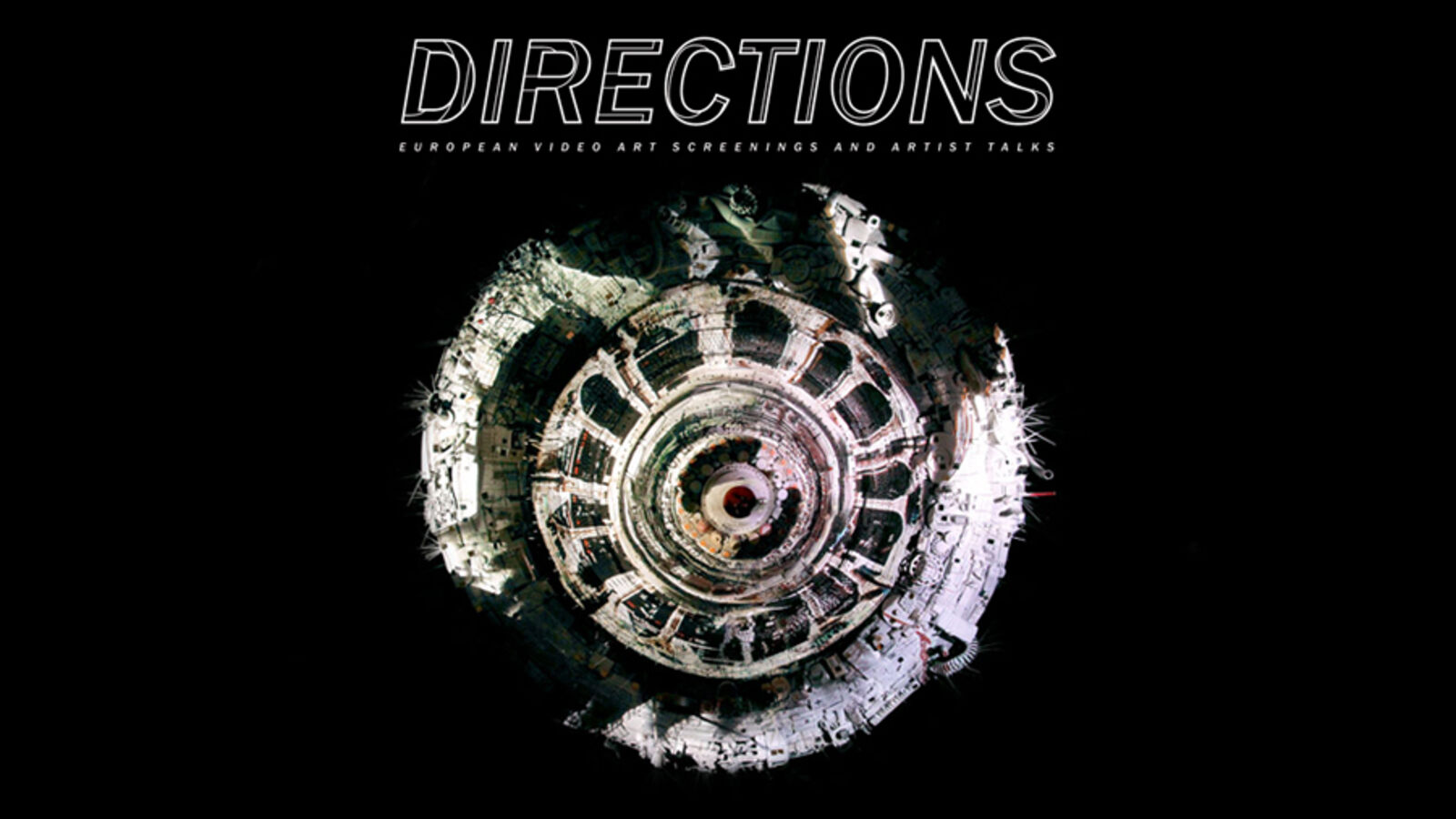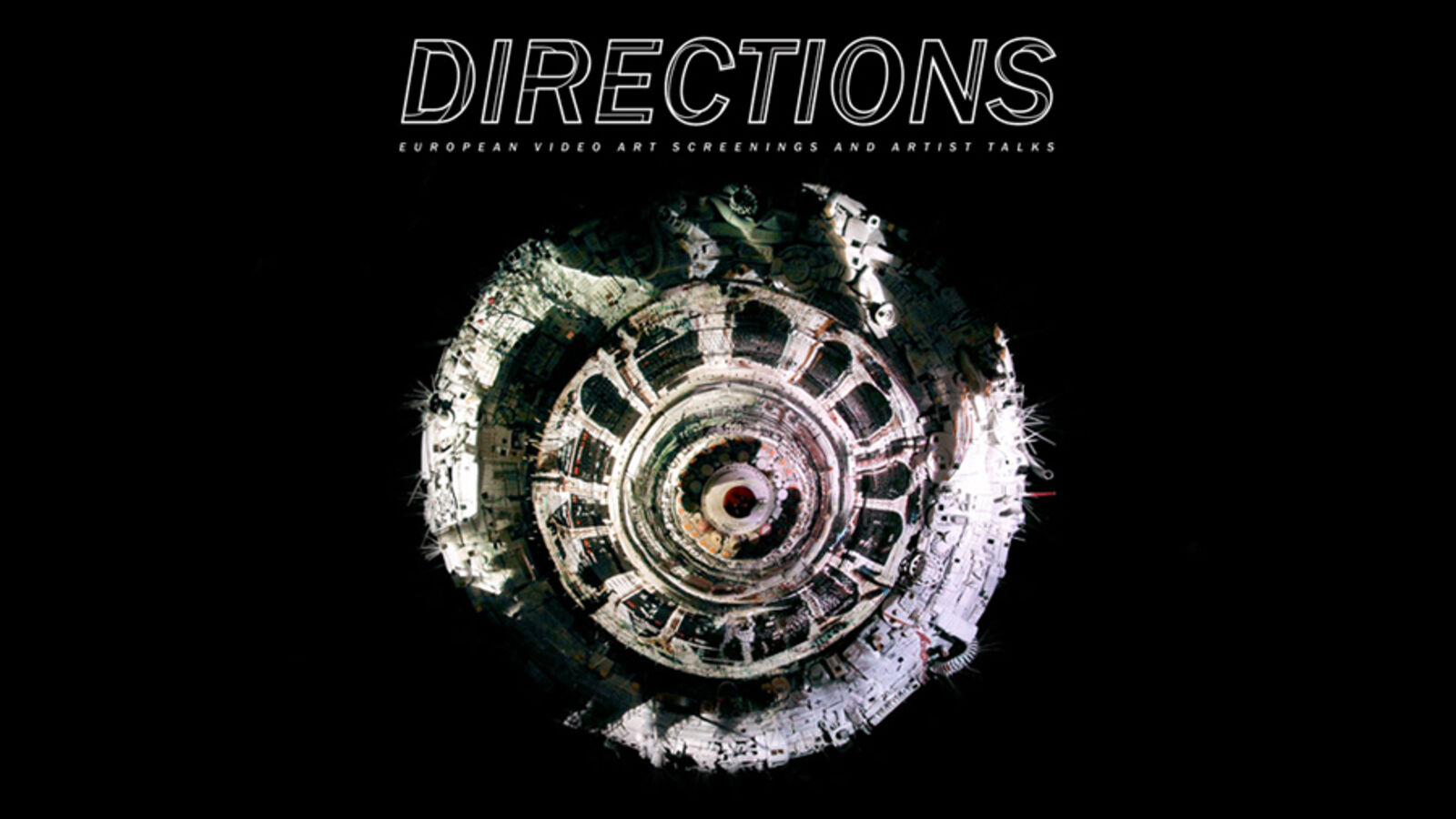Directions – European Video Art Screenings (Preview) Deel 2
de Appel, Prins Hendrikkade 142, Amsterdam

Van 29 september tot en met 8 oktober toont de Appel arts centre deel 2 van de preview screenings voor Directions. Het eerste deel was te zien van 12 tot 20 september.
De screenings zijn van 6 – 11
toegang: gratis
Entrée via Moes bar en restaurant, prins hendrikkade 142 souterrain
De tweede editie van Directions gaat verder met het onderzoek naar het gebied dat tussen video, kunst en cinema ligt, en onthult de invloed die dit heeft op het creatieve proces van de kunstenaar. De verschillende interpretaties van de taal van de cinematografie, van het begin van cinema tot vandaag, zijn een onuitputtelijke bron voor artistieke experimenten. Hierbij ontstaan steeds vaker banden tussen cinema en videokunst waarbij de twee elkaar blijven voeden. De geselecteerde kunstenaars gebruiken deze cinematografische taal op een persoonlijke en unieke wijze, om zo hun eigen universum te creëren waarin de structuur van film en video opnieuw in elkaar wordt gezet.
Een van de hoofddoelen van het project is het ontwikkelen van connecties en een dialoog tussen de geselecteerde kunstenaars, waarbij de relatie met cinematografische vorm op de voorgrond staat. Dit wordt niet alleen getoond door de screenings, maar ook door middel van kunstenaars gesprekken.
September 29 & 30 Broersen & Lukacs: Mastering Bambi
Walt Disney's 1942 classic animation film 'Bambi' is well known for its distinct main characters – a variety of cute, anthropomorphic animals. However, an important but often overlooked protagonist in the movie is nature itself: the pristine wilderness as the main grid on which Disney structured his 'Bambi'. Broersen and Lukács recreate the model of Disney's pristine vision, but they strip the forest of its harmonious inhabitants, the animals.
October 1 & 2 Sarah Vanagt: In Waking Hours
In the short film In Waking Hours we see historian Katrien Vanagt - who studied the Latin writings of this Plempius - cloaked in the skin of a 21st-century disciple of Plempius. Her cousin, filmmaker Sarah Vanagt, is there and captures how this modern "Plempia" meticulously follows her teacher's instructions. Thus, in a dark kitchen in Brussels, they become witnesses at the birth of images upon the eye.
October3 & 6 Jakub Nepras: Metropolia
The city hovers authoritatively overhead. A unique view of the colossus in which most of us live. An icon of today’s city in a regular turning rhythm every moment links a new event to itself. The rotating frequencies contain visual and symbolic rhythms of present-day cities. But mostly from Shanghai and Prague. An abstract story of a universal city culminates in several phases and then sinks back into darkness.
October 7th: Matthias Muller: Cut / Ali Kazma: Play / Adam Ulbert: Alexander and The Toad
Christoph Girardet and Matthias Müller’s film 'Cut' (2013) renders the screen as a skin to be punctured and penetrated, with the cinematic interface acting as a fragile boundary between inside and outside. Through editing found footage with surgical precision, they craft a disturbing montage that exploits our reflexive identification with the figures we follow onscreen (what film theorists have evocatively called 'suture'). Closeups of wounds, spilled blood and other unsettling tactile images inspire a certain nausea as the film potently cuts through self and other, the 'flesh of the world' and our very own blood and guts."
Ali Kazma’s 'Play' stages the representation of the body through an artistic discipline; the theatre. Shooting the Wooster Group’s Hamlet rehearsals and the actual performance, Ali Kazma takes the audience into a haunted world where the borders between the past and the present, the original and remake, real and representation are skilfully blurred; a world of ghosts that evokes contemplation on memory, loss and death in a seemingly contrasting technological set-up."
“Alexander and the Toad" is part of an ongoing video series called "The Originator". The video is an introduction for further series in which the main character ¬ supplemented with further figures ¬ will participate in a mutual carnivalesque procedure to meet what they call the Originator. "Alexander and the Toad" is based on a 17th century alchemical text (which fragmentally shows up in the video). This cryptic text - "The Vision of Sir George Ripley by Eirenaeus Philalethes" - tells the story of the basic alchemical trans¬substantional procedure using the image of a Toad to explain the correct way of the alchemical operations for the alchemist.
October 8th: Broersen & Lukacs: Mastering Bambi / Sarah Vanagt: In Waking Hours / Jakub Nepras: Metropolia
De tweede editie van Directions is mede mogelijk gemaakt door: Czech Center (Rotterdam), Goethe Institut Niederlande (Amsterdam), LIMA international platform for sustainable access to media (Amsterdam), TCH Projects - Hungarian Cultural Forum (Amstelveen), Yunus Emre Instituut (Amsterdam) and Vlaams Cultuurhuis De Brakke Grond (Amsterdam).
